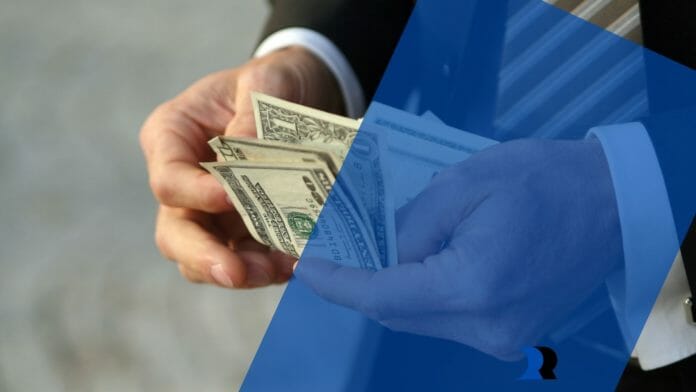It can be tricky for someone with little or no knowledge about personal loans to borrow the money. You might make a dire mistake that will leave you indebted for a very long time. A lot of people have become bankrupt in this manner. To make well-informed decisions, one ought to do adequate research on the subject matter.
You don’t have to physically go to the financial institutions to get the information you require, though that is also a viable option. This article sheds light on various areas concerning the topic. You can also check out this website for more information.
What is it?
This simply refers to money you can acquire from a financial institution such as a bank or credit union and then, later on, pay it back with interest. The money is given to you on certain terms that you must agree to.
The agreement form serves as a contract between you and the borrower, and so you are legally bound and have to adhere to the terms. It is, therefore, important to make sure that you read the document properly before signing it, as some of the conditions might be unfavorable to you.
The money can be used for personal needs like paying off another debt, covering medical bills, paying for repairs at home, and much more. Although, some firms tend to limit this by excluding some uses from the list. For example, they can specify that you don’t use it to pay off student loans.

How Does one Acquire The Loan?
The procedure for getting a loan is usually more or less common for all types. You have to first apply for it and wait as your application is getting considered.
If it gets approved, you will get notified and then proceed through the finalization before the money is deposited in your account. Some of the things considered during the evaluation process are your credit history and income.
A good credit history shows that you can be trusted to adhere to the terms and pay back the debt. Having an income also shows your ability to pay.
Although the structure is common, there are some parts that tend to vary depending on the platform being used. For example, using a mobile app might bundle all the steps together so that you completely finish the application process at once and then immediately get the money if it is approved.
This is particularly common for unsecured loans. On the other hand, applying manually through a bank might require you to go back and finalize the paperwork after approval before you can get the cash.
Secured vs. Unsecured Loans
These are the two broad categories of personal loans. The former requires the borrower to specify an asset or something of value that will be used as security. In case they default, then it can be sold, and the money is used to cover the debt.
Thus, it must be either of equal value to the amount borrowed or more. Some of the items that are commonly used for collateral include vehicles, houses, investment accounts, and real estate. You should be careful when choosing an asset to be used as collateral to avoid finding yourself in awful situations. For instance, using your personal house as security might leave you homeless if you fail to pay the debt.
Unsecured doesn’t require you to give any collateral. Most small loans are usually of this type. You can also get large sums if you have a high level of income. The time frame is short, and the interest rates are higher than for secured loans. See this link to know why people would opt to go for a personal loan https://www.forbes.com/advisor/personal-loans/good-reasons-to-get-a-personal-loan/.

Other Types of Personal Loans
- Check-Off
This is available to employees of companies where the employer has an agreement with a financial institution. It can be a measure taken by the company to improve the welfare of its employees.
Money is taken from the employee’s salary to service the credit. The application process is easy and fast because of the arrangement between the company and the lending firm.
- Non Check-Off
Here there is no understanding between the employer and the lender; hence there are no routine monthly deductions from your salary to pay back the amount borrowed. Still, you may have to meet certain conditions like having an account with that financial institution and having at least a certain amount in it.
- Logbook
A logbook loan is a type of secured credit that uses your vehicle as collateral. You’ll have to surrender the logbook to them until you completely pay the debt. This is quite similar to asset loans, with the only difference being that the former only accept your vehicle for security while the latter can accept a wide range of possessions.
What Are The Requirements?
To be eligible for the credit, you must meet certain requirements as specified by the lender. Some apply to all firms, while others are specific.
- Credit Score
This is a rating of your creditworthiness. It ranges from 300 to 850. From 300 to 629 is considered bad, 630 to 689 is fair, 690 to 719 is good, and 720 to 850 is excellent. The rating is done based on a number of factors such as your total debt, history of repayment, credit mix, and so on. It not only determines whether you get the money but also the amount that you can be given and the interest on it. Thus, you should have a nice score.
- Account
Some firms will require you to have an active account with them for at least a certain amount of time. On top of that, you’ll need to have some money in the account. The longer you’ve had an active account with them containing a large sum, the higher the amount you will be eligible for.
- Legal Documents
You will be required to provide your legal name and ID, among other legal documents. While at it, you should also make sure that the company is legitimate.
- Income
You might be required to have a certain level of income for you to qualify for the credit. At the same time, some specify the minimum level others don’t.
- Collateral
For secured loans, it is necessary that you have a valuable asset that can be used as collateral.
What Determines The Total Cost?
- Interest
When paying back the money borrowed, you will be expected to pay the interest accrued as well. The rate can be calculated either monthly or yearly as a percentage of the principal. It is good to consider the annual interest rate rather than the monthly one to get the whole picture. Monthly rates might seem low, but they accumulate and can result in very high annual rates.
- Fees
Based on the type of credit and the policies of the firm offering it, certain fees might apply. The processing fee is a common example. You should consider the total fees that apply to avoid any surprises.
- Penalties
Violating the conditions that were agreed upon will result in penalties that will add to the total cost. For instance, failure to pay the required amount on the set date will be penalized.
To get the full estimate of the additional amount that you will have to pay on top of the principal, you should check the annual percentage rate (APR). This is usually specified by the lender. It is inclusive of the interest and other additional fees. Click here to see the importance of this type of loan.
Conclusion
A personal loan refers to money that an individual can borrow from a financial institution to serve their personal needs. It is subject to interest as specified by the lender, and additional fees can also apply. You should check the Annual Percentage Rate (APR) to know the estimated cost of paying the debt in terms of interest and other charges that apply. Make sure that you only deal with legitimate institutions that won’t scam you. Be careful to avoid making grievous mistakes.


